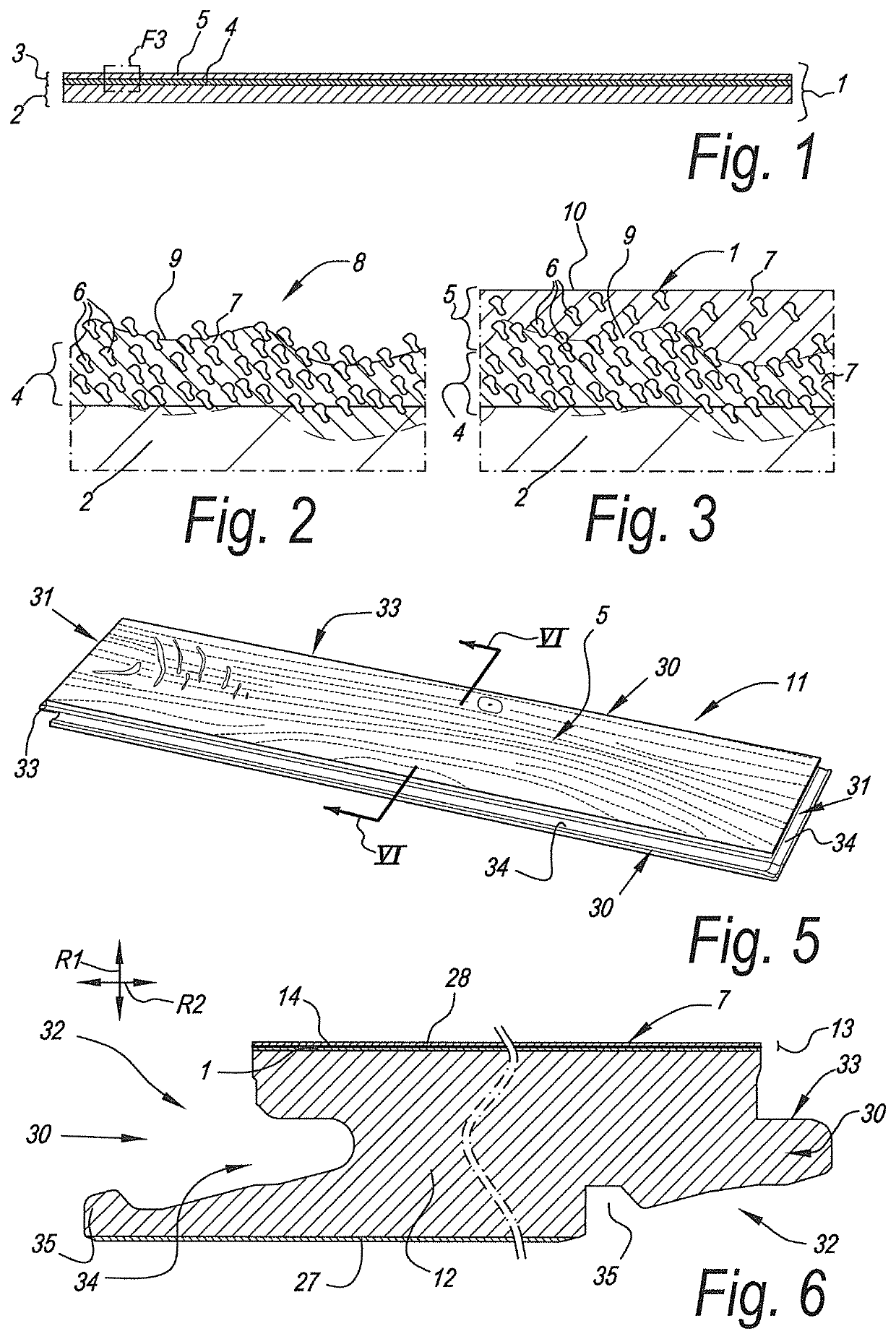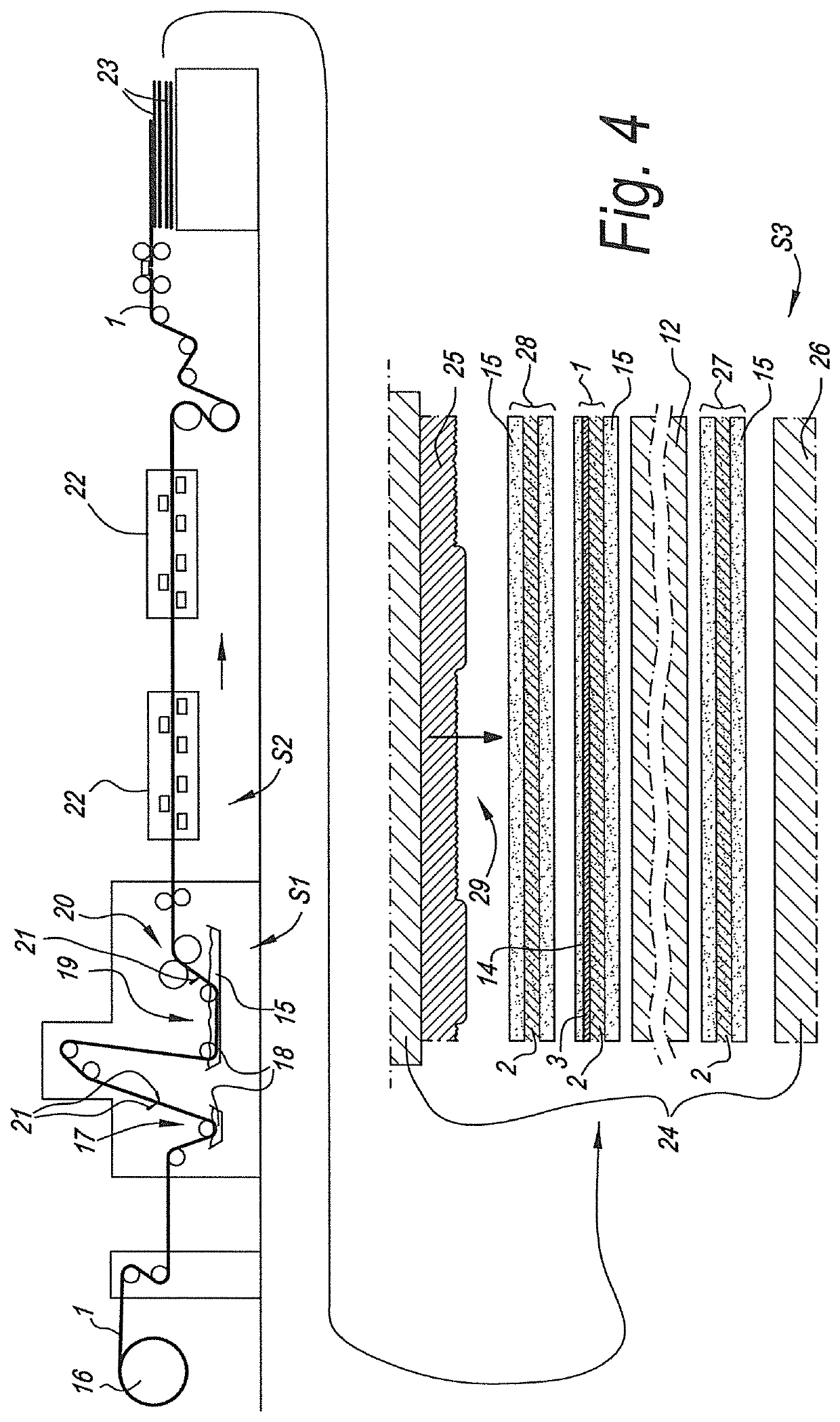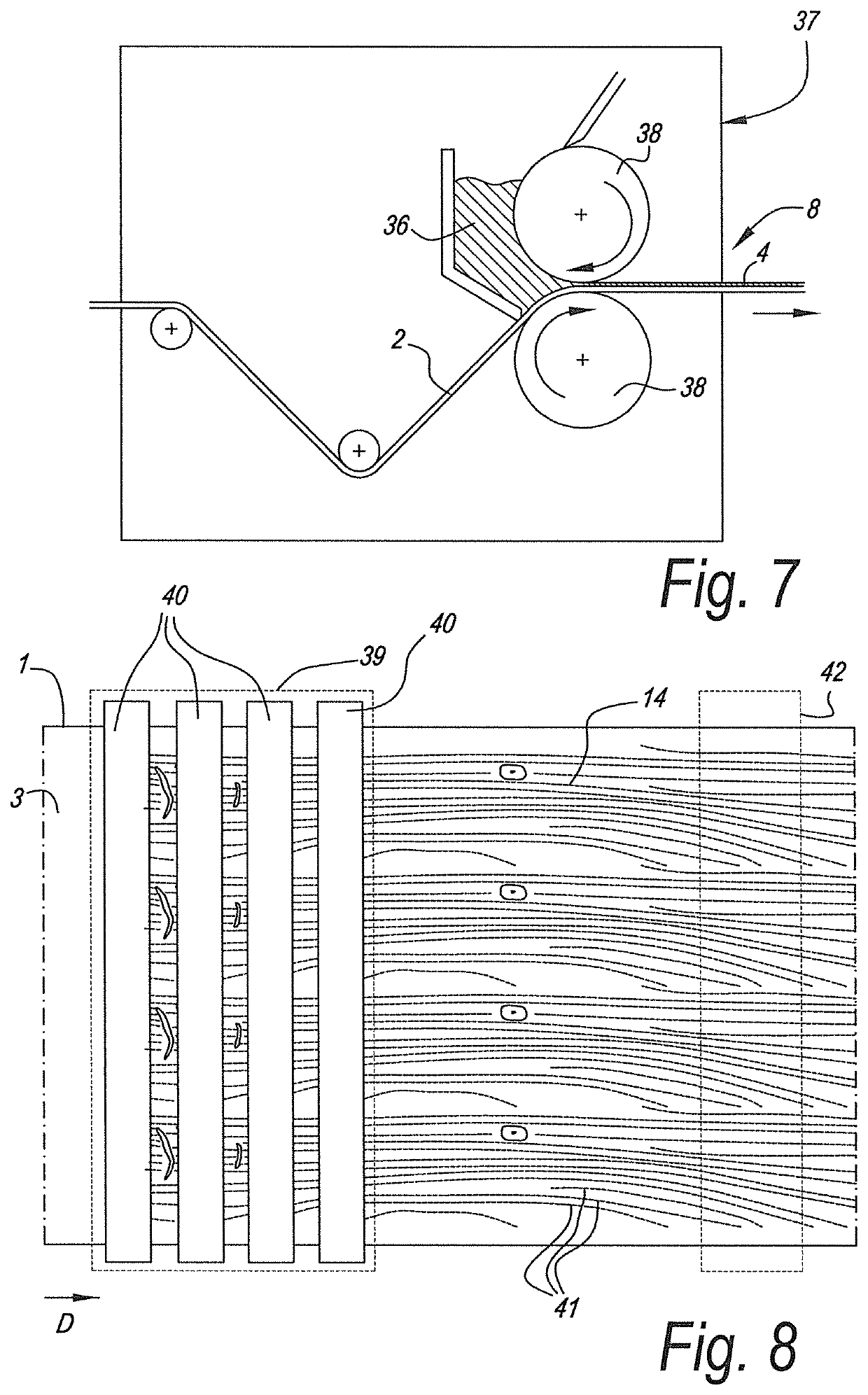Method for manufacturing inkjet printable paper or foil for use as a decor paper or foil
a printing paper or foil and decor paper technology, applied in the field of panels, can solve the problems of pigments quickly precipitating from the ink mixture, and achieve the effects of excellent print definition, and reduced risk of failing nozzles
- Summary
- Abstract
- Description
- Claims
- Application Information
AI Technical Summary
Benefits of technology
Problems solved by technology
Method used
Image
Examples
example c
[0144]6 kg of commercially available amorphous silica (Syloid EDS) was dispersed in 41 kg of water and heated to a temperature of 80° C. To this mixture 2.7 kg of a silane (Dynasilan), acting as a particle surface modifying agent or coupling agent, was added and let stir with for 30 minutes. Then 2.3 kg of glyoxal 40% (BASF), as a crosslinking agent, was mixed and let stir for another 30 minutes. Then 0.5 kg of boronic acid, also functioning as crosslinking agent, was added and let stir for 10 minutes.
[0145]Separately 2.5 kg of polyvinylalcohol (mowiol 20 / 98 Kuraray) was dissolved in 26.4 kg of water at 90° C. and left stirring until this was completely dissolved (2 hours).
[0146]Hereafter the silica dispersion was added to the mowiol solution and stirred thoroughly. To this mixture 0.04 kg of leveling agent, 0.04 kg of antifoam and 0.03 kg of fungicide was added and stirred for another 5 minutes before the coating was bottled and cooled down. The obtained coating composition is free...
example d
[0150]6 kg of commercially available amorphous silica (Syloid EDS) was dispersed in 41 kg of water and heated to a temperature of 80° C. To this mixture 2.7 kg of a silane (Dynasilan), acting as a particle surface modifying agent or coupling agent, was added and let stir with for 30 minutes. Then 2.3 kg of glyoxal 40% (BASF), acting as a crosslinking agent, was mixed and let stir for another 30 minutes. Then 0.5 kg of boronic acid, also acting as a crosslinking agent, was added and let stir for 10 minutes. After this 5 kg of a 40% aqueous solution of polyDADMAC (polyquat40U05 by Katpol) was added and let stir for another 10 minutes. The polyDADMAC is a polyionic polymer that functions as an ink destabilizing agent in accordance with the invention.
[0151]Separately 2.5 kg of mowiol 20 / 98 (Kuraray) was dissolved in 26.4 kg of water at 90° C. and left stirring until this was completely dissolved (2 hours).
[0152]Hereafter the silica dispersion was added to the mowiol solution and stirred...
example e
[0156]Two coating compositions were made.
[0157]First coating composition:
[0158]13.4 kg of commercially available amorphous silica (Syloid EDS) was dispersed in 41 kg of water and heated to a temperature of 80° C. To this mixture 6 kg of a silane (Dynasilan) was added and let stir with for 30 minutes. Then 5.2 kg of glyoxal 40% (BASF) was mixed and let stir for another 30 minutes. Then 0.5 kg of boronic acid was added and let stir for 10 minutes. After this 5 kg of polyquat40U05 (by Katpol) was added and let stir for another 10 minutes.
[0159]Separately 2.5 kg of mowiol 20 / 98 (Kuraray) was dissolved in 26.4 kg of water at 90° C. and left stirring until this was completely dissolved (2 hours).
[0160]Hereafter the silica dispersion was added to the mowiol solution and stirred thoroughly. To this mixture 0.04 kg of leveling agent, 0.04 kg of antifoam and 0.03 kg of fungicide was added and stirred for another 5 minutes before the coating was bottled and cooled down.
[0161]The pigment to bin...
PUM
| Property | Measurement | Unit |
|---|---|---|
| pH | aaaaa | aaaaa |
| particle surface area | aaaaa | aaaaa |
| particle surface area | aaaaa | aaaaa |
Abstract
Description
Claims
Application Information
 Login to View More
Login to View More - R&D
- Intellectual Property
- Life Sciences
- Materials
- Tech Scout
- Unparalleled Data Quality
- Higher Quality Content
- 60% Fewer Hallucinations
Browse by: Latest US Patents, China's latest patents, Technical Efficacy Thesaurus, Application Domain, Technology Topic, Popular Technical Reports.
© 2025 PatSnap. All rights reserved.Legal|Privacy policy|Modern Slavery Act Transparency Statement|Sitemap|About US| Contact US: help@patsnap.com



